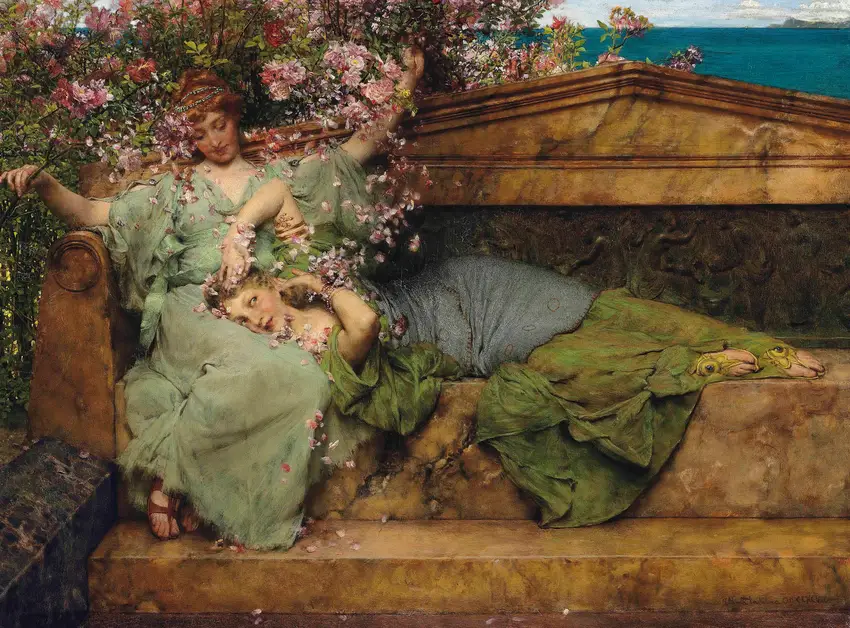Lawrence Alma-Tadema
Lawrence Alma-Tadema (1836–1912), English, Renowned for his meticulous depictions of classical antiquity, this Dutch-born painter became one of the most celebrated artists of the Victorian era. His canvases shimmer with marble, sunlight, and sumptuous textures, transporting viewers to an idealized ancient world. Though trained in Europe, he found his greatest success in England, where his work captivated audiences hungry for escapism and historical grandeur.
What set him apart was his almost archaeological precision. He studied Roman architecture, artifacts, and even textiles to ensure every fold of a toga or glint of bronze was rendered with near-photographic accuracy. Yet his scenes were far from dry reconstructions—they pulsed with life, whether depicting languid aristocrats reclining in sun-drenched courtyards or crowds murmuring in ornate amphitheaters. The interplay of light and stone became his signature, with cascading petals or rippling water adding fleeting movement to otherwise frozen moments.
Critics initially dismissed his work as overly decorative, but Alma-Tadema’s influence quietly permeated popular culture. His visions of antiquity shaped Hollywood’s early epics, and contemporary directors still reference his compositions. Later in life, his reputation waned as modernism rose, but recent decades have seen a revival of interest in his technical mastery and unique blend of historical rigor with sensual immediacy. Beyond the marble and gold leaf, his true legacy lies in making the distant past feel tantalizingly alive.
What set him apart was his almost archaeological precision. He studied Roman architecture, artifacts, and even textiles to ensure every fold of a toga or glint of bronze was rendered with near-photographic accuracy. Yet his scenes were far from dry reconstructions—they pulsed with life, whether depicting languid aristocrats reclining in sun-drenched courtyards or crowds murmuring in ornate amphitheaters. The interplay of light and stone became his signature, with cascading petals or rippling water adding fleeting movement to otherwise frozen moments.
Critics initially dismissed his work as overly decorative, but Alma-Tadema’s influence quietly permeated popular culture. His visions of antiquity shaped Hollywood’s early epics, and contemporary directors still reference his compositions. Later in life, his reputation waned as modernism rose, but recent decades have seen a revival of interest in his technical mastery and unique blend of historical rigor with sensual immediacy. Beyond the marble and gold leaf, his true legacy lies in making the distant past feel tantalizingly alive.
-

In A Rose Garden
Lawrence Alma-Tadema (English, 1836–1912)A tranquil garden scene bathed in sunlight, where a woman stands among blooming roses, lost in quiet reflection.
